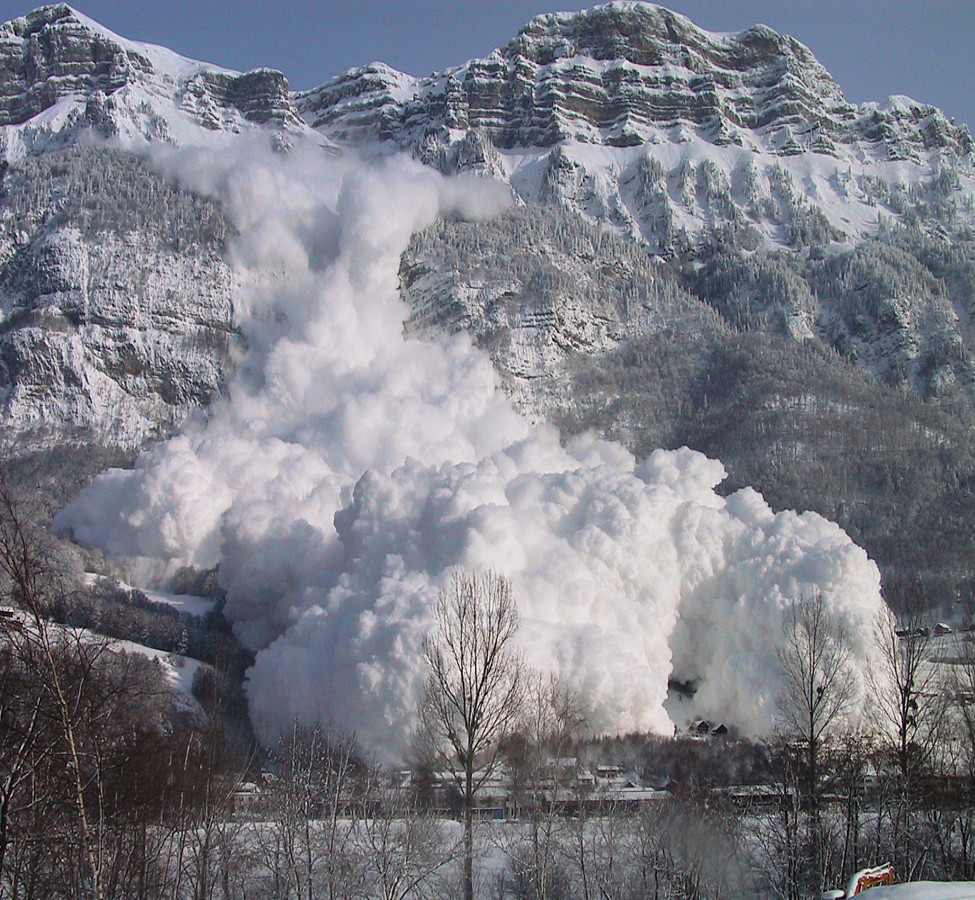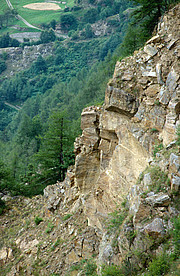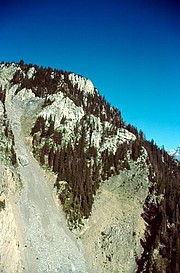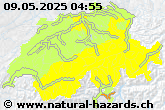Rockfall
Rockfall is a generic term to describe the free movement of material from steep slopes. The German language further distinguishes between pebble/block fall and rock fall.
Pebble and block fall (Steinschlag, <100m3)
Characterized by the sudden detachment of individual components.
Rock fall (Felssturz, >100m3)
During a rock fall, a large volume of rock is detached en masse. While falling the mass disintegrates into individual boulders and pebbles. In contrary to rock avalanches, the interaction between individual components does not influence the movement of a rock fall.
› How does a rock fall develop?
› How do I protect myself against rockfall?
Rockfall in Switzerland
Natural thawing and freezing processes promote the physical weathering of rock in the Alps. Because the Alps are a geologically young mountain range with prominent high peaks and steep valleys, falling rocks are an almost daily event there.
In the past, small settlements and infrastructure were often organised in a way that enabled the avoidance of known rockfall areas. In the more recent past, increasingly valuable buildings and infrastructure have also been protected against rockfall using technical measures (e.g. rockfall protection galleries above important transport axes).
With both types of measures, the problem remains, however, in the case of new and unexpected rockfalls. Hence, the Swiss Federal Institute for Forest, Snow and Landscape Research (WSL) focuses intensively on the research of rockfall processes and the design of new protective measures based on state-of-the-art technology.
As a result of the increase in temperature in the mountains, areas are increasingly affected by physical weathering (thawing and freezing processes) which previously were rarely exposed to temperatures above freezing. In addition, the areal reduction of permafrost and retreating glaciers in the Alps exposes additional areas, which can become potential sources for the formation of rockfall due to the absence of the stabilising effect of the (ground) ice. The increased rockfall activity in the heat wave summer of 2003 demonstrated the effects of melting permafrost on the triggering of natural hazard processes. The Eiger rockfall of July 2006 in Grindelwald can be explained by the retreat of the Grindelwald glacier.





